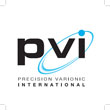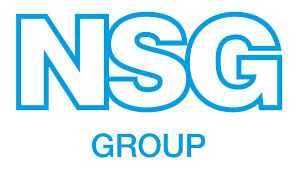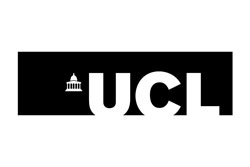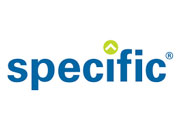 Precision Varionic International Ltd (PVI):
Precision Varionic International Ltd (PVI):
Background
PVI is an SME which designs and manufactures automotive position sensors and throttle pedals for some of the world's most iconic marques. Since 1990, PVI has delivered zero defect sensors to Fiat, Mercedes, Volvo and Smart. In 2000 we developed a fully integrated pedal and shipped more than one million pieces annually to Ford. In 2013, PVI obtained an exclusive license for the ESJET technology from QMUL. PVI and QMUL have advanced the ESJET developments since that time.
Track Record
PVI has produced in-house carbon ink formulations for automotive potentiometers for 20 years being a major supplier of contact position sensor to Bosch. In total PVI have supplied the market with more than 30 million units. PVI is involved in the development of process protocols to enable the introduction of nano-copper in automotive FR4 circuits. PVI are developing a unique electrostatic print technology system that will provide both higher resolution (feature size and print channel spacing) using a broader range of ink type compatibility than conventional ink jet technologies. PVI were involved in the ‘HICAST’ project (TSB Smart Proof of Concept) with Intrinsiq Materials Ltd. PVI and Dr Obene Coordinate the EU €6.7 million funded H2020 Hi-Response project, dedicated to the development of high resolution ESJET printing and is applications. PVI are already making commercial sales based on the results of the HI-CAST project.
Key Personnel
Dr. Pufinji Obene received a BEng Hons degree in Engineering Science from Warwick University before completing his PhD in the field of Non-Parametric Spectral Analysis and is a 20 years experienced, Innovator and proactive problem solver in cost and quality competitive sectors supplying automotive sensing products to tier 1 and OEM’s. He is the inventor of PVI’s new GMR non-contact sensor range which has steered extreme interest and orders in the Automotive and Consumer OEM community. He is Operations Director of PVI and leads its R&D team.
Dr Matthew Alexander: Lecturer in Energy Engineering University of East Anglia and PVI in-house consultant holds a degree in Applied Chemistry (1st CLASS) and a doctorate in Corrosion Engineering -“The Influence of Aggressive Marine Environments on the Hydrogen Embrittlement and Hydrogen Uptake of Steel”. Also holds APMP Qualifications in Project Management. Previously worked at Queen Mary University London within the electrospray group as a key member of the initial ESJET Proof of Concept work. As a part of this work, Mathew made several breakthroughs including: discovery of new modes of electrospray operation that have presented huge potential for exploitation in a burgeoning range of applications, including material processing, functional material deposition, micro combustion, microsatellite propulsion, high resolution printing, drug delivery, micro-droplet and micro-emulsion production. Matthew is named inventor on 3 patent applications for the ESJET technology. As further recognition of this work, Matthew was awarded the annual entrepreneurship prize by The Royal Academy of Engineering in 2008.
Nigel Holt (PVI Ink Chemist) has 35 years’ experience in polymer ink formulation using polymer and semi-conducting materials in finely divided forms.
Anna Usewicz completed her MEng (Hons) in Mechanical Engineering at Bialystok Technical University in Poland in 2005. Anna is experienced in CAD modelling and design, printing, prototyping and project management. She is also involved in and has completed various other closely related R&D projects including developing CIGS solar cells and printing nano-copper; making her an ideal candidate for managing WP1 and WP5.
Jonathan Lea completed his MEng (Hons) in Motorsports Engineering – Awarded with Distinction in 2014 at Oxford Brookes University. Jonathan for his final year project designed and built a fused deposition modelling (FDM) type 3D printer which is now used by the Oxford Brookes Formula Student team for mould making and prototyping components, as well as an educational tool for teaching students on how to use 3D printers and their associated software. Jonathan will be principally responsible for ESJET positioning system accuracy.
Project Role
PVI will act as the project Coordinator. We will lead WP1 relating to the project management and reporting, as well as WP2 focusing on the development of the ESJET technology. In addition, PVI will lead the fine line grid structure developments within WP5. PVI will play a key role within the scale-up activities in WP7 liaising with Swansea University and dedicating considerable resources to installing and commissioning the ESJET printing system within Swansea University’s pilot line. Additionally, PVI will participate in WP3 & 4 and will play a pivotal role within the commercial exploitation within WP 8.
Commercial Benefits
PVI will generate projected sales revenues of £44.6 million for the ESJET printing system. PVI anticipate the creation of up to 85 new jobs.
 Intrinsiq Materials Ltd (IML) :
Intrinsiq Materials Ltd (IML) :
Background
Originally a subsidiary of QinetiQ, an aerospace and defense corporation, IML was founded in 2002. In the last few years the Company has increased its focus on materials for printed electronics. The company is continuing to develop its next generation of products based on magnetic, semiconducting, thermoelectric and phosphor nano-particles. The company has grown from 10 employees in 2008 to currently over 30, and has a research centre and manufacturing operation based in the UK. Intrinsiq is currently participating in a number of EU funded programs including; FP7 PLASMAS and H2020 HI-RESPONSE and INSPIRED as well as previously been part of a number of EU funded nanomaterial safety consortia including Nanosafe and NanoRetox.
Track Record
Intrinsiq Materials has produced >200 different nano-particles to date including high purity metals and semiconductor structures. IML has expertise in nano-particle coating technology and ink/paste formulation and is providing samples of conductive pastes to a range of customers. It has also developed laser sintering equipment to cure deposited nano-particle films. IML led the successful Proof-of-Concept project ‘HICAST’ where with PVI they developed the nano-metal ink formulations that will form the basis of this on-going Development work.
Key Personnel
Richard Habergham – Completed a 4 year Ministry of Defense electrical apprenticeship at the Royal Aircraft Establishment at Farnborough. Gained a HNC in electrical and electronic engineering. Professional qualification in project management. He has more than 20 years’ experience in research and development projects and has been working at Intrinsiq materials since its start in 2001.
Dr. Paul Reip has a PhD in Materials from Brunel University, and joined the UK MOD in 1982. He spent the early part of his career as research scientist in weapon programmes, where he was heavily involved in International Collaboration with the USA, Europe and NATO. He was promoted to Department Manager Electro Optic Warfare in 1995, and in 1998 moved to lead the Guns and Warheads Department. During this time he founded QinetiQ Nanomaterials Ltd, was CEO on its inception in 2002, moving to Chief Technology Officer in 2005. In 2007 the company successfully spun out of QinetiQ and is now a VC funded SME, and renamed Intrinsiq Materials Ltd, where he is now UK Site Director with P&L responsibility for the UK operations. Paul has sat on many UK and EU committees on nanotechnology and was a Founder of the Nanotechnologies Industries Association.
Project Role
IML will lead WP 3 on the ink formulation, where they will manufacture copper nano-particles and nickel silicide and develop ink formulations. IML will also lead WP 4 on the C-Si front contact electrode structure development in combination with close collaboration with JM. Paul Reip will also act as the exploitation manager leading WP8 on the commercial exploitation and dissemination.
Commercial Benefits
Post-project IML will supply nickel silicide and nano copper inks generating an estimated £129.7 million of additional revenues. IML forecast the creation of an additional 120 positions.
 Pilkington Technology Management Ltd (PTML):
Pilkington Technology Management Ltd (PTML):
Background
The mission of the PTML Group is to be the global leader in innovative high performance glass and glazing solutions, contributing to energy conservation and generation, working safely and ethically. The Group is one of the world's leading manufacturers of glass and glazing systems in three major business areas; Building Products, Automotive and Technical Glass. Founded in 1918, today, the Company has combined sales of just over £3.3 billion, with manufacturing operations in 30 countries and sales in 130 countries, employing some 27,000 people worldwide. PTML Group’s European Technical Centre is in Lathom, Lancashire, and PTML employs greater than 3000 people in the UK.
Track Record
PTML are world leaders in coated glass manufacture for thin film and have has extensive expertise in TCO deposition by PVD & MOCVD. PTML have developed the TEC range of TCO glass optimized to suit a variety of thin film photovoltaics.
Key Personnel
Dr Paul Warren – background in Materials Science and has worked for PTML since 1997. Currently leads the Materials Properties and Surface Analysis team – looking at the properties of glass such as viscosity and strength, and also looking at glass surfaces and coatings on glass using techniques such as SEM, AFM, XPS, SIMS and XRD. Also studying printing as a technique for depositing functional layers onto glass.
Rory Back - Joined PTML in 2015 having completed a degree in Chemistry at Durham University. He works as a technologist in the Thin Film Technology group, primarily as a member of the Wet Chemistry team, exploring and developing wet coating techniques including spray, roller, and print coating for glass. Also contributes to Online Coatings (chemical vapour deposition) and Offline Coatings (magnetron sputtering).
Simon Hurst - FRSC, BSc (Hons) is a Team Leader within the Thin Film and Technology Group at PTML. Mr Hurst has 25 years’ experience of thin film deposition for Building Product, Technical Glass and Photovoltaic applications. He has extensive project management experience within PTML, and externally within UK and EU sponsored projects. Mr. Hurst collaborates with a wide range of academic and industrial organisations.
Kieran Cheetham - Chartered physicist with a background in optoelectronics has worked for PTML since 2011. Currently working in the Thin Film Technology R&D group developing novel coatings on glass, with a specialism in magnetron sputtering.
Chris Weekes - Background in analytical science has worked for PTML since 2008. Currently working with XPS and ToF- SIMS to provide analytical support to the coatings R&D teams and automotive production facilities.
Project Role
PTML will be heavily involved in the development of fine line grid structures for TCO coated glass within WP 5. They will prepare a range of TCO coated glass materials and will assist with the testing and characterisation of copper fine line grid structured TCO glass. In addition, PTML will be a key partner in both the scale-up activities at Swansea University in WP7 and within the commercial exploitation activities within WP8.
Commercial Benefits
PTML will generate projected sales of fine line grid structured TCO glass of £42.5 mn over the period 2019-2023, representing an additional 4% of the TCO coated PV glass market globally.
 Johnson Matthey Plc (JM) :
Johnson Matthey Plc (JM) :
Background
Johnson Matthey is an international specialty chemicals company, founded almost 200 years ago in London (www.matthey.com). JM serve their customer base from operations in over 30 countries and employ 12,000 people worldwide. JM’s business is organized into five global divisions – Emission Control Technologies, Process Technologies, Precious Metal Products, Fine Chemicals and New Business Development – focused on the development of high value added, high technology products and services. JM’s new Businesses Division comprises Fuel Cells and Battery Technologies businesses and new business development programmes.
This project is closely related to Our Advanced Glass Technologies business which manufactures advanced glass materials and conductive inks for use in the automotive glass and other industries.
Track Record
Advanced Glass Technologies business sells advanced glass materials and conductive inks for use in the automotive glass, and other industries. These include windscreen obscuration enamels, rear demister pastes, conductive pastes for silicon solar cells architectural enamels and technical glass materials such as sealing glasses. (http://www.glassmatthey.com/)
Key Personnel
Mr Jonathan Booth - Jonathan Booth is a Research manager at Johnson Matthey Technology Centre with 27 years’ experience working in applied materials research. Areas of interest have previously included: thick film electronic materials, magneto-strictive and magneto-optic materials, and palladium based hydrogen diffusion membranes. For the last 15 years Jonathan has specialized in glass enamels and high temperature (glass containing) conductive pastes for both the automotive and photo-voltaic industry. Jonathan has a particular interest in the development of new glass compositions to meet specific technical requirements and detailed characterization of materials physical and chemical properties. Jonathan has been involved in several collaborative programs over the past 20 years.
Project Role
JM will manufacture frits for development for nickel silicide formulations and copper ink formulation within WP3. They will additionally undertake curing trials and materials characterization on the front contact electrode structures within WP4.
Commercial Benefits
JM will secure £2.1 mn of glass frit sales per annum by 2023. JM will additionally seek distribution rights to the ink formulations developed and will seek to explore other markets.
 University College London (UCL) :
University College London (UCL) :
Background
UCL team led by Professor Kwang-Leong Choy has pioneered a portfolio of patented novel, non-vacuum, cost-effective, and eco-friendly Chemical Spray Vapour Deposition (CSAVD) based methods, which is a platform thin/thick film coating technology with well control structure and composition at nanoscale level. A range of oxides, and non-oxides (including II-VI semiconducting materials, CIS) and nanocomposite coatings have been deposited using non vacuum CSAVD based methods. UCL’s interest in this project is that we plan to scale up the non-vacuum deposition process for the novel and cost-effective fabrication of perovskite solar cells.
Track Record
UCL team led by Professor Choy has rich experiences on Chemical Spray Vapour Deposition of a range of oxides, and non-oxides (including II-VI semiconducting materials, CIS) and nanocomposite coatings. UCL has been involved in a lot of major national, EU and international collaborative clean and renewable energy programmes. Choy’s team, for example, has good track records of involving in EU/large projects, with strong collaborations with both academic and industrial institutions. These include nanostructured thin films and coatings (EU-FP6 – RESTOOL, EXCELL, FOREMOST), and low cost transparent conducting oxides for thin film Si solar cells (EU-FP7 ThinSi: FP7-Energy-2009-1-241281), UK Industrial funding via SEAS DTA: “Flexible thin film photovoltaics”, and EU-FP7-SCALENANO project(FP7-NMP-Energy-2011-284486) : “Development and of nanostructure based materials and processes for low cost and high efficiency photovoltaics”.
Key Personnel
Prof. Kwang-Leong Choy (D.Phil., DSc, FIMMM, FISC) received her D.Phil. from the University of Oxford. She has extensive experience in developing & exploiting eco-friendly, cost-effective & sustainable thin films & nanocomposites processing technologies, especially for clean & renewable energy applications. She has published >200 papers, including 2 books & 20 patents. She obtained her D.Phil in Materials Science from the University of Oxford (awarded the Hetherington Prize & Oxford Metallurgical Society Award). She was a Violette & Samuel Glasstone Research Fellow at Oxford before joining Imperial College in 1994 & was promoted to Reader in 2001. She pioneered the innovative Chemical Spray Assisted Vapour Deposition based methods, including the ESAVD & AACVD methods, a platform thin/thick film coating technology with well control structure and composition at nanoscale level which led to the Grunfeld Medal Prize by Institute of Materials (UK) & a spin-out company, IMPT Ltd. She was awarded a Visiting Professorship (2001/03) by the Swedish Engineering Research Council at the University of Uppsala. She also co-founded Southside Thermal Sensing Ltd. She is leading a research team developing novel & cost-effective vapour processing of ceramic & polymeric films, nanocomposite coatings and nano-structured materials for clean energy and functional applications. She has been awarded multimillion pounds research from EPSRC, HEFCE, the Royal Society, EU-FP 6 &7, Marie Curie, TSB, Regional Development Agency (RDA) and many companies.
Dr. Daqin Yun holds a PhD in Physical Electronics from Xi’an Jiaotong University, China. (2009). He has more than ten years’ experience in solar cells (including physics, materials, fabrication and characterization). Daqin has rich work experiences in developing hybrid organic/ inorganic heterojunction solid state solar cells and perovskite solar cells, and now he is a Researcher at UCL Institute of Materials Discovery, actively participating and supporting the renewable energy related projects.
Project Role
UCL will lead WP 6 dedicated to the application and testing of copper fine line grid structured TCO glass to thin film single junction cells.
 Swansea University :
Swansea University :
Background
SPECIFIC is an Innovation and Knowledge Centre (IKC) led by Swansea University. It was established in 2010 in the emerging technology area of functional industrial coatings and has grown to 130+ staff; a co-location of professionals bridging the gap between academic research and commercial exploitation of its intellectual assets. SPECIFIC is core funded by EPRSC, Innovate UK, Welsh Government, academic and industry partners (Tata Steel Europe, PTML and BASF). SPECIFIC’s ultimate purpose is to nucleate and accelerate the creation of a new UK industry in disruptive coating technologies resulting in economic growth. Its aim is to rapidly develop, scale up and commercialise ‘world class’ functionally coated metal and glass products.
The shared vision of all partners to SPECIFIC is to transform buildings into power stations; generating clean, renewable energy from coatings used in the built environment. The development of future flexible, resilient and affordable energy systems will enable energy to be generated, stored and consumed (released) at the point of use delivering significant and environmental benefits. This vision is now part of government policy with the launch of the milestone DECC PV Strategy document in April 2014. As the value of products affected by Surface Engineering and Advanced Coatings in construction in the UK is £25bn pa, the potential for long term economic impact by SPECIFIC is significant.
The ambitious rapid growth of SPECIFIC has been realised with the development of its Pilot Manufacturing Resource Centre (PMRC). The re-configurable factory is unique in the world in being able to coat glass, steel, plastic and flat board products in a clean room environment using any available solution coating process. The PMRC represents the transition for SPECIFIC to new TRL delivery in the manufacturing scale up of building demonstration devices. Alongside the PMRC that allows scale- up production; SPECIFIC boasts state-of the art laboratory facilities whole building demonstrator facilities to support its vison of creating ‘Buildings as Power stations’.
Track Record
SPECIFIC has capabilities for investigating PV device performance including 2 solar simulators, IPCE and custom built high frequency transient IV measurement. Lifetime testing can be carried out under a variety of lighting conditions (from high luminance Xenon arc through fluorescent tubes and LED) and environmental conditions from room temperature to 95% Humidity and 100oC. This is macro functional testing capabilities is complimented by an extensive scientific suite of instruments including AFM, FEG-SEM, SVET, SKP, XRD, XPS capable of examining coatings, and their structure and failure mode.
Key Personnel
Dr Eifion Jewell has a degree and PhD in mechanical engineering from Swansea University. He was a founder of the Welsh Centre for Printing and Coating (WCPC), Swansea University. He is now a senior Technology Transfer Fellow with responsibility for process upscaling at SPECIFIC having spent several years developing industrial networks in printed electronics on secondment to the Electronics Sensors and Photonics KTN. An author of over 60 academic papers he has also been responsible for technology transfer from the science base to industry through training, tool development, material optimization and production design. He lectures on the Imperial college doctoral training centre on printing for electronic manufacture and has also been invited to deliver similar courses at international conferences.
Dr Trystan Watson has a chemistry degree from Swansea University and then a doctorate in corrosion of steel packaging materials. A chartered engineer he has significant industrial experience as an analytical chemist with 3M and 3 years as a product development engineer as Corus Strip products. In academia he has been responsible for developments in novel processing methods for dye sensitised and thin film solar cells. These developments are predominantly aimed at reducing process bottlenecks, improving yield, and increasing lifetime, designing in process metrology and reducing processing costs. This novel work is widely published within the academic community and he is also the holder of several patents. He now manages a group of 15 post graduate and post -doctoral research engineers developing novel materials and processes for third generation PV devices.
Dr Justin Searle has a degree in chemistry and an engineering doctorate in corrosion science of steel products. Following completion of his EngD he spent 10 years as technical engineer and process specialist at TATA steel Shotton integrating new technology into high volume manufacturing coating lines. Since joining SPECIFIC he has undertaken a number of senior scientific roles in novel coatings and their characterization. He has since been given the responsibility of being key liaising officer with PTML, developing new products and coating process for glass substrates including TCO and their replacements.
Project Role
SPECIFC will lead the scale-up activity within WP 7. Additionally, SPECIFIC will assist with solar cell testing and accelerated lifetime measurements for both WP4 on c-Si and on WP5 on the fine line copper grid structured TCO. SPECIFIC will support dissemination activities by highlighting the ESJET technology at industry focused open days.
 Queen Mary College University of London (QMUL) :
Queen Mary College University of London (QMUL) :
Background
QMUL is ranked 11 out of approximately 150 UK HEIs for research by the recent UK research assessment exercise; overall engaged in research and teaching with a turnover of approximately £250m. Prof John Stark is a member of the School of Engineering and Materials Science.
Track Record
Prof John Stark is the initial inventor and originator of the ESJET technology. QMUL have developed the technology and secured three patents to date. In 2013 QMUL exclusively licensed the technology to PVI.
Key Personnel
Professor John Stark (Male) BSc, MSc, PhD, CEng, FRAeS, FRAS
Since 1992 - Professor of Aerospace Engineering, Department of Engineering, and School of Engineering and Materials Science, Queen Mary, University of London. Director of Electrospray Research Group (Previously Head of School 2003-2011) 1989 - 1992: British Aerospace, Space and Communications Ltd.: Executive Role: Board Member of Earth Observation and Science Division and Headquarters Executive British Aerospace, Space and Communications Ltd
1983 - 1989: Department of Aeronautics and Astronautics, University of Southampton: Lecturer/Senior Lecturer PhD (UCL) 1977 X-ray observations of the Cygnus Loop supernova remnant. Author of more than 150 research publications, and 1 book: Spacecraft Systems Engineering (now in its 4th edition) – for which he was awarded the IAA: Luigi Napolitano Literature Award (2004).
Project Role
QMUL will play a key role in the ESJET development and performance characterization within WP3. They will play an advisory role in the other work packages utilizing the ESJET printing.

